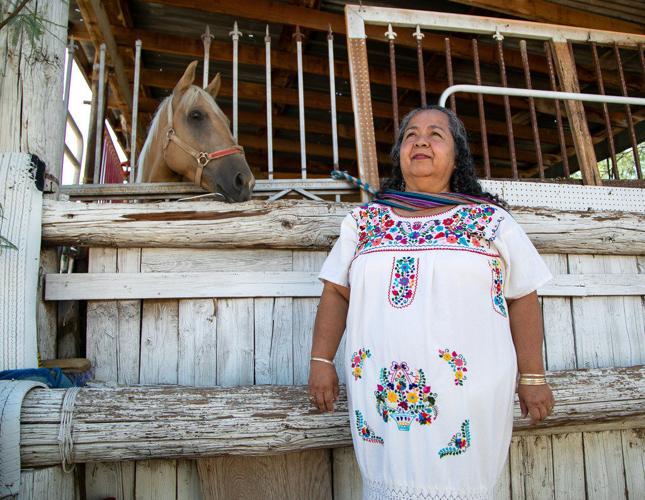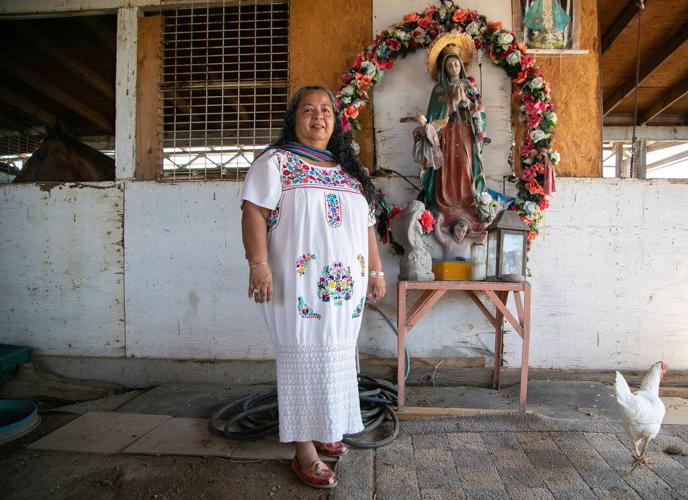Josefina Cardenas has spent all her nearly 58 years living along the banks of the Santa Cruz River, at the foot of Sentinel Peak. She reveres the land, she respects its historical past.
It is Tucson’s birthplace and has been inhabited by people for some 4,000 years. Yet the land — la cuna de Tucsón — has been trampled on, desecrated, injured and left with a bleeding, open wound. It was once a brickyard and then a dump.
“Look what we have done to our birthplace,” said Cardenas, whom I visited Friday morning in her home in Barrio Kroeger Lane, on the east bank of the river, north of West Starr Pass Boulevard.
Cardenas and several other Tucsonans will be honored for their efforts to preserve Tucson’s history by Los Descendientes del Presidio de Tucsón at its annual gala dinner on Aug. 18 at the Tucson Convention Center.
For nearly 30 years, Cardenas has worked tirelessly to remind Tucson that the foot of “A” Mountain, along the river’s west bank, is sacred, special land. It is where the ancient Hohokam people lived and farmed, followed by the Tohono O’odham, whom the Spanish colonizers called Pima when the Europeans arrived in the late 1600s. The Jesuit missionary explorer Eusebio Francisco Kino established Mission San Cosme y Damián de Tucsón in 1692, the same year he founded the first mission at San Xavier, south of Tucson. Later Spanish colonists built the Mission San Agustín complex which included a chapel, convento, granary, gardens and other structures.
Although the colonists erected a permanent presidio on the east bank of the river in 1775, the official year Tucson was founded, our city’s birthplace has always been at the spring at the base of the black mountain which the ancient inhabitants called Chuk Son, the basis of Tucson’s name.
In the past three decades, Cardenas, a small, quiet, spiritual woman, has tenaciously pulled and prodded barrio residents, city officials, the Rio Nuevo district (which controls the land), developers and anybody else to honor Tucson’s birthplace. Her commitment is unquestionable.
You can almost hear in her voice the wailing of the injured land of mesquite and cottonwood trees, and the cries of early people who followed the seasons and the flow of the river water. When the ancient land was excavated, the remains of the people who had lived there and the evidence of their history were used to make modern bricks, Cardenas said.
“The pain and anger continues,” she said softly.
Rio Nuevo Chairman Fletcher McCusker wrote me in an email that Cardenas has often appeared before the board “to both praise and scold us.” And while Cardenas has criticized the board for what she perceives as slow progress on issues pertaining to the west-side barrios and preserving Tucson’s origins, McCusker wrote “she is consistently unselfish yet unrelenting” about protecting the land. He added, “I have found her to be straight forward, always honest and often working against all odds. The community is blessed to have her involved.”
Her activism has its roots when she was a child. Cardenas, a fourth-generation Tucsonan, grew up on nearby South Cottonwood Lane, less than a mile south on the west flank of the river, where her family grew crops and raised horses and cows. Her paternal great-grandfather made adobe bricks; her mother’s family homesteaded the land at the foot of the Rincon Mountains.
When she and her husband, Luis Cardenas, bought their one-acre parcel, “I jumped the river,” she said. They named their property Rancho Alegre and filled it with horses and small farm animals.
In the mid-1990s, Cardenas, a graduate of Cholla High School, saw the need to organize children in Barrio Kroeger to help them connect to the land and its history. She created a youth club to teach the children horseback riding and how to make tortillas and paper flowers. She shared the culture and history of the river with barrio children who were unaware of the land they lived on.
The club evolved into a “dream on the dump,” a center which would be dedicated to the birthplace of Tucson and where Tucsonenses could learn about the history and culture. In 1999, when city voters approved the creation of the Rio Nuevo district, Rancho Chuk-Son Cultural Center was part of the plan to redevelop downtown Tucson and Tucson’s birthplace.
Rio Nuevo has changed significantly since then. It has moved away from public facilities focusing on our history to expanding commercial development like the Caterpillar regional office building that is going up and constructing a velodrome for cyclists, an idea that apparently has gone flat.
Rancho Chuk-Son remains a dream, however. And Cardenas’ dreams remain solid, like the volcanic rock from “A” Mountain, even if the obstacles remain as high and wide as they were when she began her journey. Bringing greater attention and recognition to Tucson’s birthplace is a mission that is worthy of her time and energy and faith.
“We have to keep on loving each other unconditionally even if we don’t agree,” she said.






